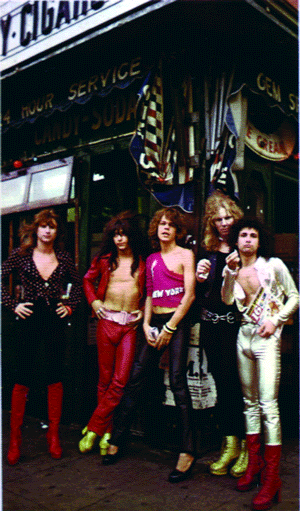Killer Kane, the glam drag rocker who became a good Mormon
Rockers may die but rock never does. This is the message of “New York Doll,” a new documentary about the seminal ‘70s rock/punk band The New York Dolls and bass guitarist Killer Kane. Arthur, as Killer Kane is known now, is a much-changed figure from his time in the ‘70s. The New York Dolls were notorious for dressing in drag and singing poppy, fast-beat rock. Many images are shown throughout the film of Killer Kane’s old persona, which usually involved lipstick and a lot of blond hair. By contrast, in 2004, the year in which the documentary is set, Arthur was, well, a Mormon.
After The New York Dolls broke up in 1975, due to the usual troubles that plague successful bands—namely, drugs and alcohol––the band members went their different directions. Two of them died from drug-related problems, and alternatively, a couple went on to other bands but continued to call themselves The New York Dolls.
However, while the other members of the band went on with their lives or died, Arthur “Killer” Kane remained in limbo. He tried to stay a rock star, joining and starting various bands, all of which failed, leaving him known, but in an inexorable state of fading he couldn’t stand.
When we meet Arthur he has gone from glam drag idol to family archivist in a Latter Day Saints temple, or as Kane puts it in his own words, “schmo on the bus.” However, the director Greg Whiteley, also a Mormon, does not allow “New York Doll” to become an exploitation film; this is not “The Simple Life.” Even though Arthur’s life is very humble, he is praised by all the people around him—from his pastors to the librarians at his temple, to the famous rock stars, including Iggy Pop, who comment on his band’s influence.
Arthur is genuinely helping people who try to find their family histories at his temple, so it’s only fair that the film gives Killer Kane a second chance. “New York Doll’s” greatest strength is its portrayal of Kane as a person who has tried to make the best of all situations, and who has derived success from his failures.
As part of the Meltdown Festival in London, the musician Morrissey was asked to reunite the three remaining members of the New York Dolls for a comeback. Arthur was forced to get his guitar out of hock to go join his friends in London. On stage, before and after the band’s breakup, Arthur “Killer” Kane never moved much, in contrast to the wild antics of his band mates. Through energetic songs, this bass player stands almost arboreal, just shaking his head and clapping.
Throughout the film, cheesy animations are inserted, as are interviews with rock icons to contextualize the Dolls’ significance, but these cartoons and stars matter less than the subject himself. “New York Doll” is a valuable film because it focuses on the life of Arthur Kane, not as a caricature or a rocker, but as someone trying to reconcile his old life with his new one. It triumphs in its realization that as much as Kane is a rock star, he is also a man.
gaycitynews.com


































